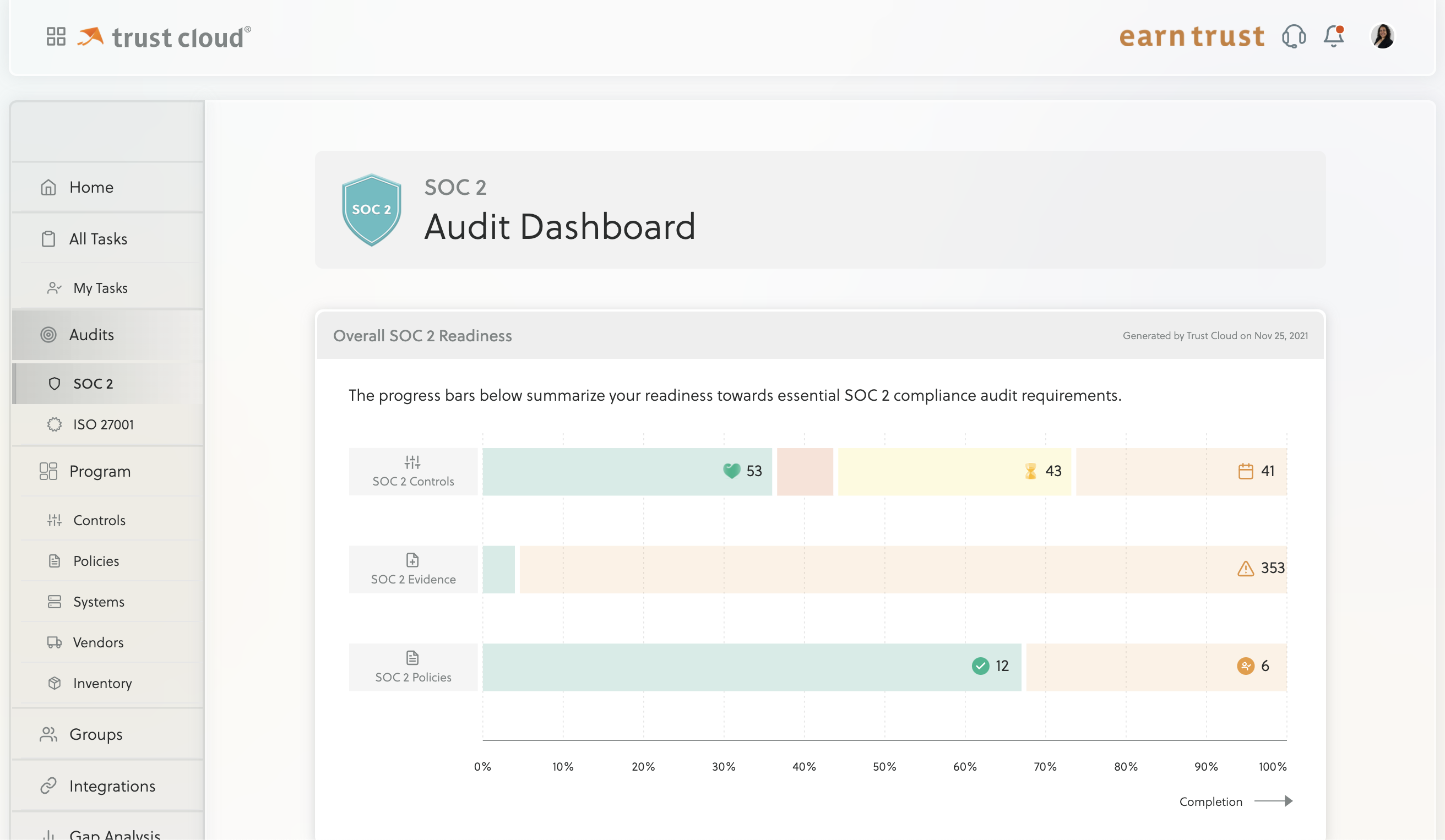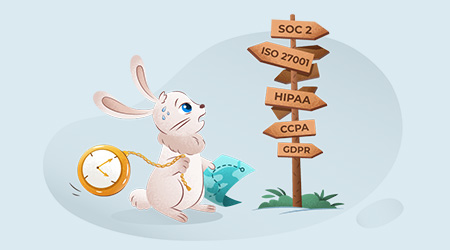Like almost all positive behaviors (investing in health, financial prudence, education) the time to start on the compliance journey is NOW. As a startup, you may not have the luxury to delay a sales deal while trying to get a compliance audit completed. In that vein, it is prudent to be ahead of it and start thinking about compliance as soon as we are ready to support clients.
Most of us think of compliance as something associated with enterprise-level organizations with well-established products and/or services offering and a sizable compliance team whose job is to go through a checklist day in and day out. While that was definitely the traditional way of compliance, things have changed drastically as many startups have compelling product and services offerings that can disrupt traditional enterprise-level organizations.
To gain new customers, smaller organizations are often required to demonstrate their posture around the security, confidentiality and privacy of their data. What’s not always clear, however, is why, when, what, and how to go about becoming compliant with information security certifications such as SOC 2 or ISO 27001.
If you’re unsure as to which certification you need to pursue, check out our blog post: How Do I Choose Between SOC 2 & ISO 27001?
In this post, we wanted to put together some helpful pointers to guide you:
Why Should I Invest in Compliance?
Compliance reduces your exposure to risks and liability, which goes a long way in building trust for your brand in the market, and that is a HUGE differentiator! Most compliance frameworks enforce risk assessment methodologies that help startups uncover risks associated with their people, process and technologies. Having a thorough understanding of these risks helps in prioritizing efforts to reduce risk and thereby reduce liability.
The benefit of being a start-up is that you can build a product with the needed compliance capabilities at the outset. Factoring nimble compliance into product design not only helps in attracting savvy investors but perhaps, more importantly, smooth entry into established markets.
Building compliance into the fabric of a company positions it to deal effectively with the regulatory and competitive challenges of growth. Embedding compliance by design thought process within technical and business processes will provide you with a sharp competitive edge in the markets you want to capitalize on.
When Should I Start the Compliance Process?
Begin now, as it is probably the best time to start building your program, either from the ground up or dusting off what you already have and building on it.
Don’t let the idea of perfection kill a good start. A compliance journey is an iterative process and it focuses on securing the data the company has in its possession. As you build your program, the initial focus will be on data encryption, restricting access to the data, ensuring the right people can make changes. As you mature, you will need to drive meaningful insights from all your logging data and even automate certain actions such as disabling access.
Just like your product matures over time, your compliance program will keep maturing and becoming more efficient. Additionally, compliance doesn’t stop after the initial certification. You need to show continuous compliance in order to keep up with your certification.
Now is also a good time to start building guardrails on your vendor engagements. As you engage with cloud infrastructure providers, consultants, data platform providers, or other kinds of vendors, it’s important to have the expectations set on the security and compliance requirements and how they can provide the support you need to manage your compliance program. For example, you would need to talk through your change management program to ensure that your CI/CD vendor can comply with your change management controls and also build workflows to provide the necessary evidence to satisfy your compliance requirements.
What Should I do?
Start by identifying your compliance requirements. Review your business classification and the market you want to capture. Is your business classified as a fintech, biotech, SaaS, manufacturing, etc.? For each of these classifications, you would need to know the compliance frameworks that govern that industry and choose that as a guiding path to build out your program.
To get an idea of what compliance frameworks apply to your industry, a good place to start will be to check your potential customers’ webpage on the frameworks they adhere to, or even to look at your competition’s compliance certifications. This data is publicly available on the websites and can be a good place to understand which frameworks could potentially apply to your organization.
Another consideration for startups & smaller organizations is that the security controls need to be flexible enough to protect your startup as your team, technology, data needs, and funding grow. Controls are broadly categorized as technical and administrative controls and are means to limit risks within your environment. Technical controls are system enforced, such as automated application source code testing or enforcing encryption. Administrative controls are manual controls such as writing job descriptions, checking references for new hires.
The traditional compliance requirements can be overkill for the small companies, however, with the right understanding of the intent behind each requirement, you can operate securely while still enabling the velocity you need to operate. For example, there is a requirement in most compliance frameworks to log user access for sensitive applications. For a product startup, this is a huge resource investment to build within the product and could significantly reduce its ability to build other product features. While having this functionality within the application is nice to have, you can fulfill this requirement by leveraging your load balancer logs to capture when and who accessed the application and still have a secured posture.
How Should I Go About Becoming Compliant?
While it may seem overwhelming at first, it’s important to remember to start small and keep building on your program. If you’re wanting to start with SOC 2, for example, review its controls and identify your gaps and the low-hanging fruit. You can do this one of two ways:
- You can do this manually by outlining the requirements in an Excel spreadsheet and mapping it to controls and policies you’ve adopted and hyperlinking the appropriate evidence. If this sounds painful, know that it is.
- You can work with a compliance automation tool, such as TrustOps, to auto-generate controls and policies relevant to your organization, conduct periodic gap assessments, and keep track of all tests and evidence. We should also mention that as a result of the automation we built into TrustOps, you can become audit-ready in as little as 3 months.

SOC 2 Readiness Dashboard in TrustOps
At the end of the day, we’re suggesting that you explore compliance with a proactive mindset, as it will save you time and money in the long run. If you’re wanting more helpful tips on how to go about tackling compliance, we’re a Zoom call away. You can schedule one here.



